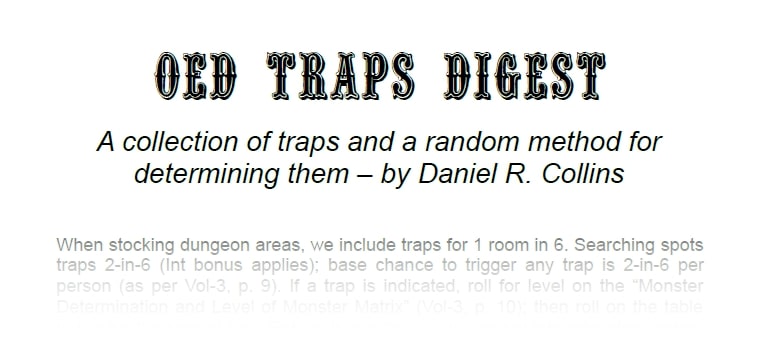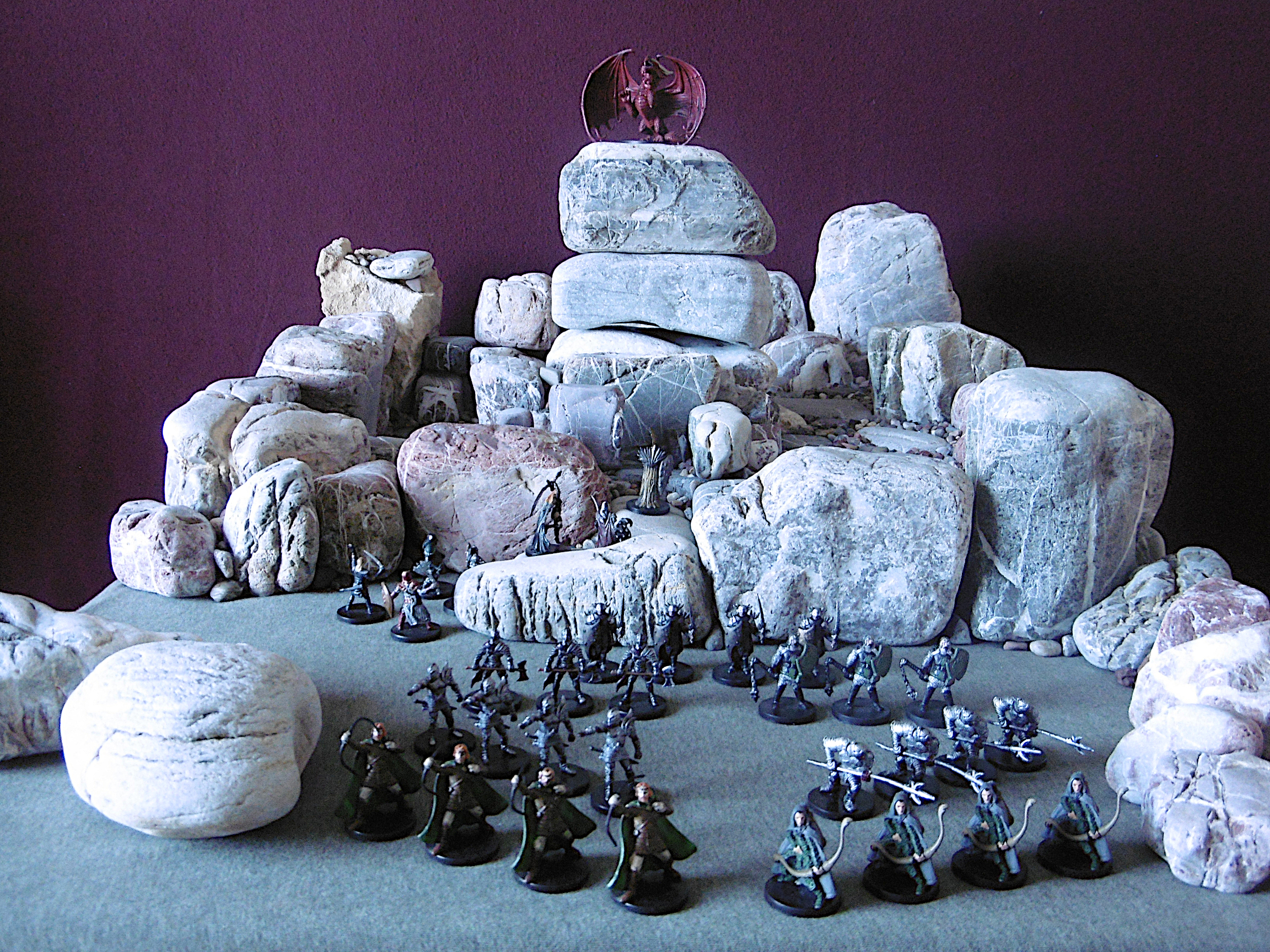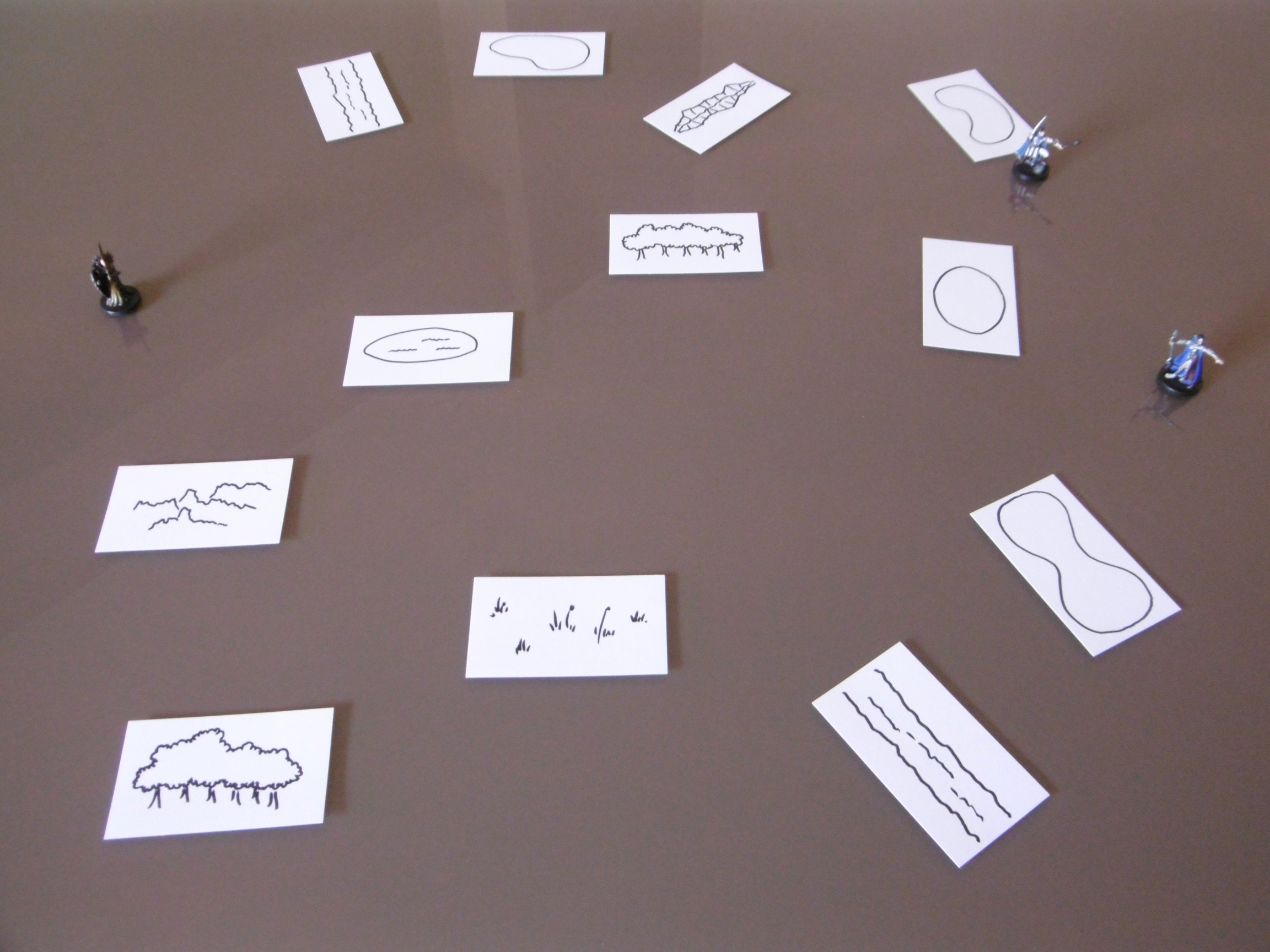Terrain Selection Modified by Local Terrain
Four hills, two woods, a marsh, and a river runs through it. Using Chainmail’s Terrain Selection method, a battle is fought over similar ground, regardless of the larger terrain in which the engagement takes place.
This is more true in my experiments playing the whole terrain-card deck. But even when limiting the draws to four per player (as the rules suggest), a forest battlefield could be barren of trees. Opposing forces in swampland might fight on a battlefield with a couple hills and no marsh. Conversely, in hill country, a commander might have to maneuver around a swamp. There is no intrinsic difference between battlefield terrain in different biomes.
The following modification simulates more varying terrain. It exchanges terrain cards based on the terrain types occupied by opposing forces on the strategic map.

The Thane of Gyrhawk, travels through mountains on a trail. The Orc King intercepts. Both forces occupy mountain hexes on the strategic map. Ending experiments, I laid this terrain with four draws per side. See the terrain card placements in the photo below.
One or More Terrain Types
Depending on your strategic-level rules, you might fight a battle within a single biome, say forest or hills. Or, outside a campaign, you might be fighting a battle in which the scenario dictates the general terrain. In those cases, you have only one terrain type as input to the following card exchange.
Using the Valormr strategic rules, however, when two or more forces meet on the strategic map, each force occupies one hex. Each occupied hex may have terrain different from the others. We assume the engagement takes place somewhere near hex borders. So, we encounter a mix of biomes.
Replacement Cards
This method requires making additional terrain cards. As an alternative, a pencil mark, erased afterward, on the cards which these replace may suffice.
- 4 woods
- 2 marsh
- 1 river
- 2 hills
- 4 wooded hills
- 4 low hills
- 4 high hills
- 1 impassable terrain
Marsh, Pond, Gully, and Rough Ground ★
With this method, we group marsh, pond, gully, and rough ground into a category, designated by a star (★). In some terrain types, we replace one or more of these four cards, which we may choose randomly or by preference.
Simulating Maneuver for Suitable Terrain
A battle does not necessarily take place in a random spot between two armies. Commanders maneuver forces to fight on advantageous terrain. This is modeled in the strategic rules by the contact dice. The commander with the higher throw draws and places, in his or her first turn, a number of terrain cards equal to the number by which the throw was won. In this way we simulate the commander’s advantage gained by outmaneuvering the opponent.
Hills and Lines of Sight
A rise of seven feet or more over a hundred horizontal feet (7% grade) slows movement.1 This becomes the definition of a hill in a tactical wargame. All hills slow movement, but not all hills block lines of sight. At a scale of 1″:10 yards, a hill rises at least two feet over one inch on the table. At 1″:20 yards, the hill is four feet or higher. I round to five.
| Class | Height | Blocks Lines of Sight for Creatures |
|---|---|---|
| Low | 5′ | Smaller than man-sized |
| Medium | 10′ | Man-sized to ogre- and troll-sized |
| High | 15′ | Up to giant-sized2 |
I represent hills of different heights with layers of cardboard, from which the contour is cut (photo above). A low hill is one layer. I add another smaller layer, cut to a similar contour, to make a medium hill. For a high hill, I add a third—larger—layer beneath the first. Thus, a high hill is also broader.
Terrain Card Replacements
We take the terrain types given in Chainmail’s Terrain Selection (10) as clear terrain. That is, when all engaging forces occupy clear hexes, we use the terrain cards in the numbers given.
For each non-clear terrain hex occupied by an engaging force, exchange cards as follows. When three or more forces meet, no more than two of the same terrain type should be considered.
Players may agree, prior to the draw, to substitute any card that makes sense in the battlefield scenario.
Clear: No change.
Forest: Exchange one hill and one ★ for one wood card each.
Hills: Exchange one ★ for one hill card. If a second force also occupies hill country, one ★ exchanged should be the marsh.
Forested Hills: As hills, plus exchange two hills for two wooded hills.
Swamp: Exchange one hill for one marsh; two hills become low hills. When a second force is in swampland, also exchange the gully for one river; all hills are low.
Mountains: Exchange the marsh for impassable terrain—a peak, an escarpment, or the like; two hills are high. With a second force in mountains, exchange one ★ for one hill; two more hills, now four out of five, are high.
Rivers and Coastlines: Apply the predominant terrain type as above. River cards define one or more tributaries or inlets.

A dowel, placed before the terrain-card draw, represents the general line of the mountain trail. Two hills (fore- and background) are high, and the pond is a mountain lake. The previous photo is the finished model. The lone hill opposite the stream is embellishment.
Positioning Rivers, Coastlines, Trails, and Roads
When forces occupy hexes containing linear features, these may be transposed to the wargames table prior to terrain card draws. The position of a river, coastline, trail, or road depends on the relative positions of the forces involved.
Careful placement lends to or limits tactical possibilities for one or more sides without depriving all forces of portions of the table. If all forces are on the same side, for example, the river edges the battlefield. If one force is on the opposite bank, or if one or more forces travel on water to enter the battlefield, the river may well run through it.
Notes
1 Foot Marches, ATP 3-21.18 (Field Manual 21-18), Department of the Army, April 2017, paragraph 1-28.
2 Relating the Chainmail giant’s stone-throwing ability to B/X, I get a stone giant, which is 14′ tall. Bigger giants could see over a high hill.










